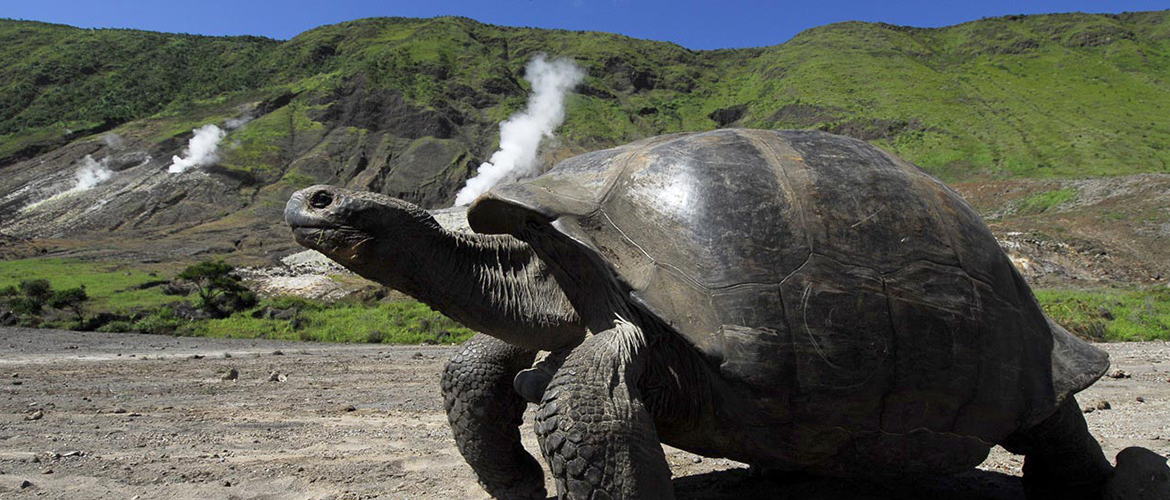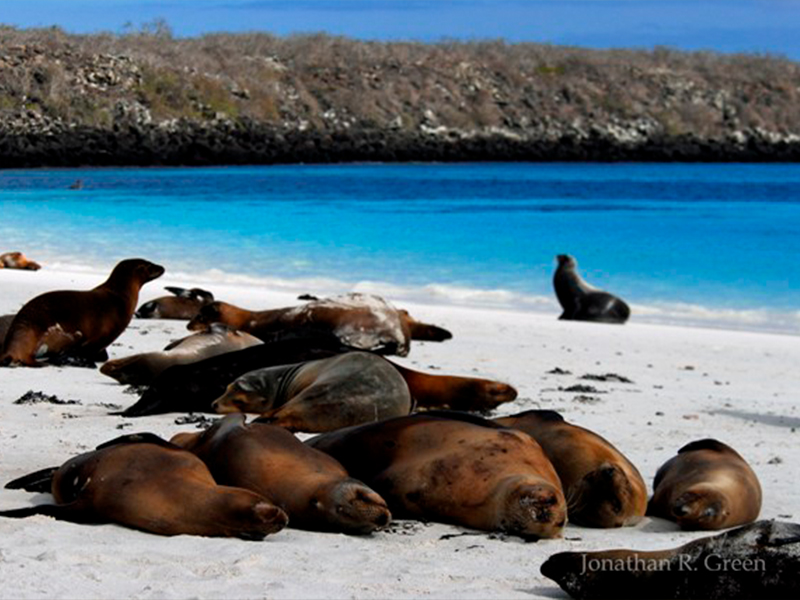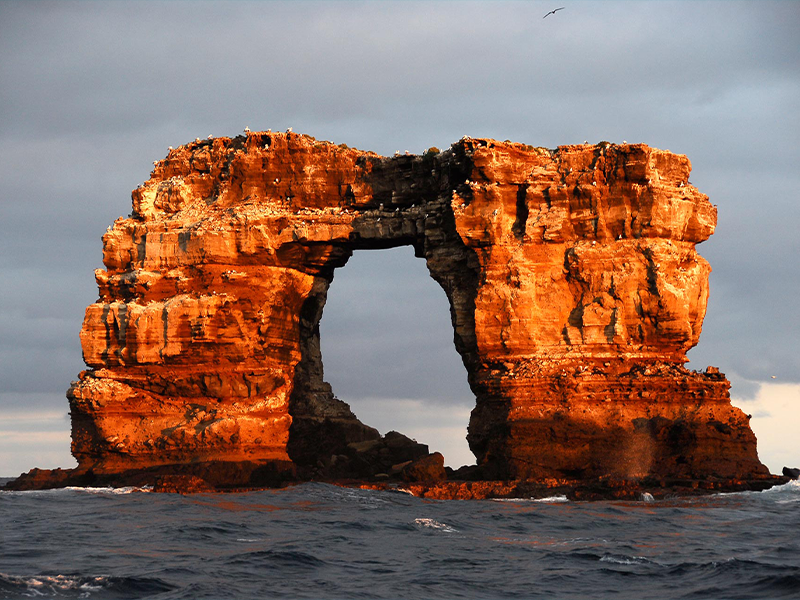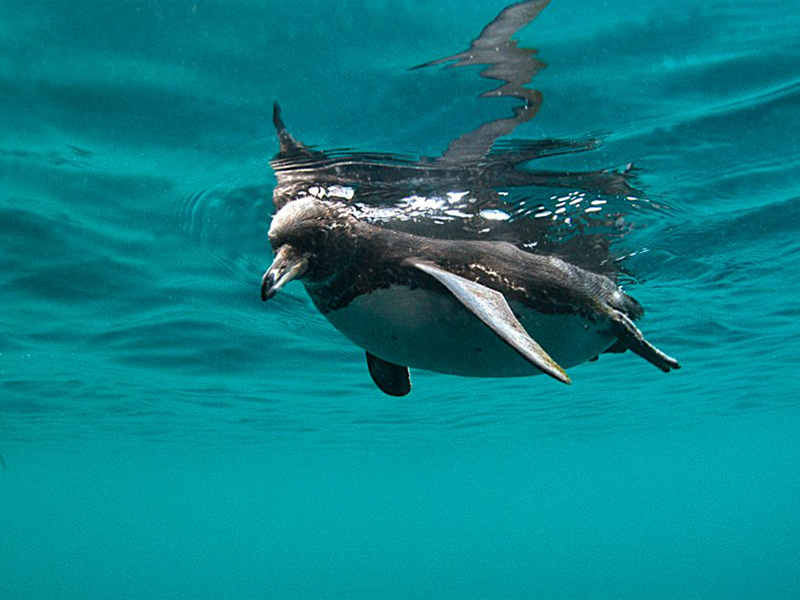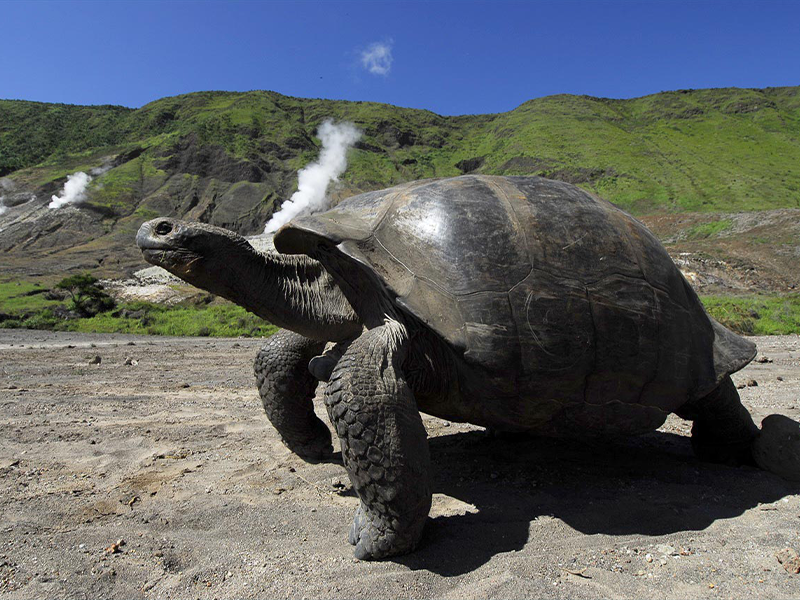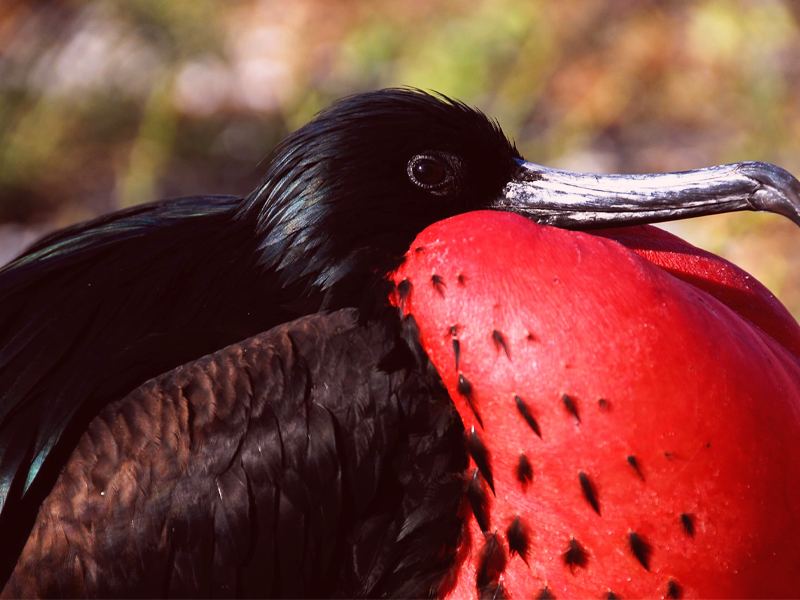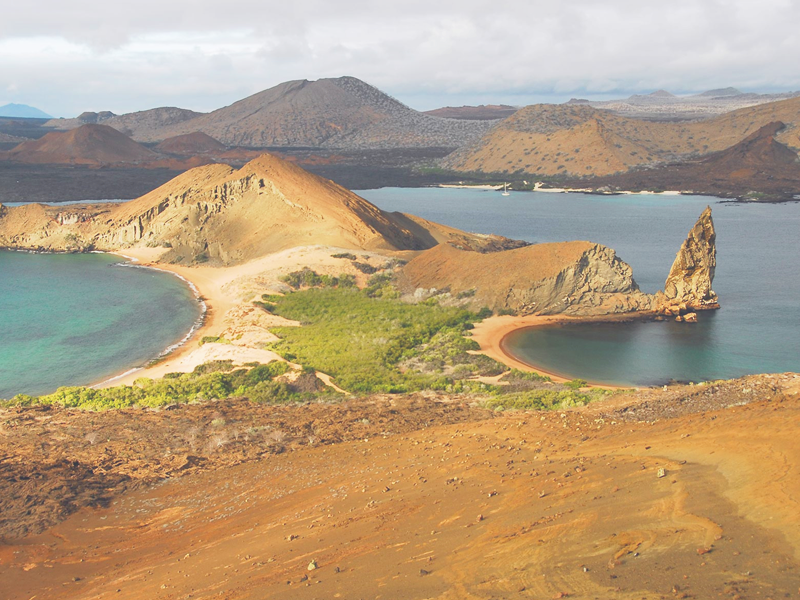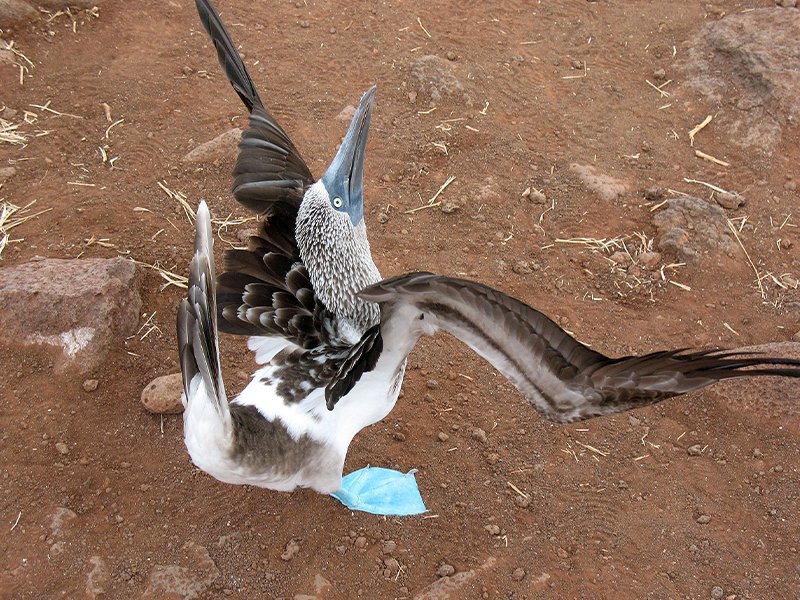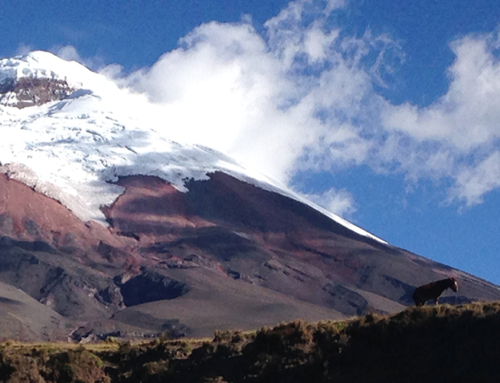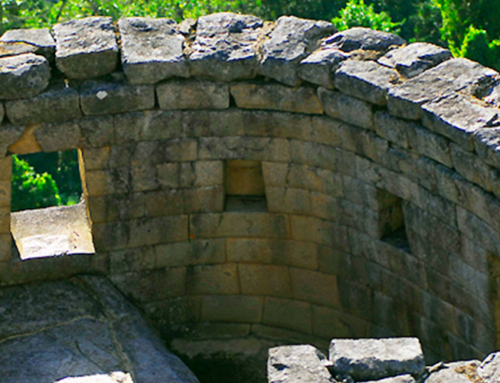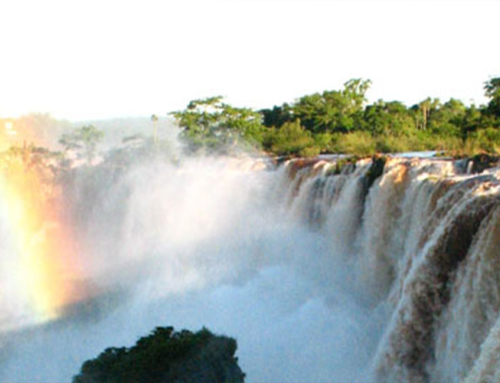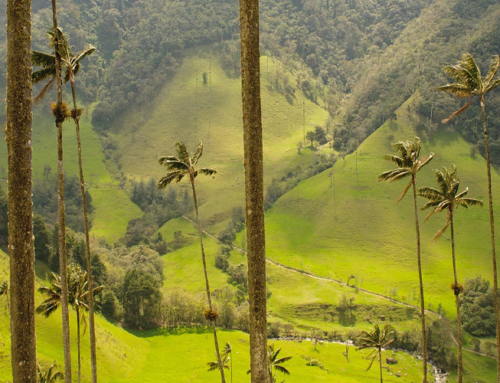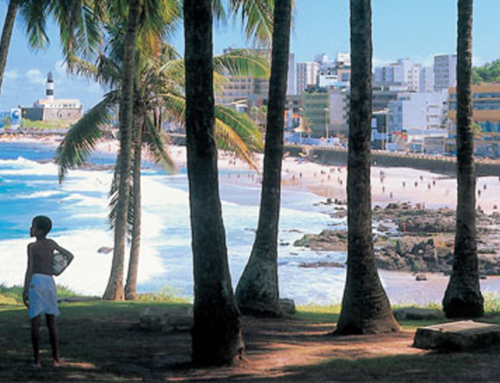Volcanic in origin, their natural history has never ceased to cause wonder amongst scientists and visitors alike.
Often GALAPAGOS ISLANDS are described as a living laboratory of evolution. Many of the species of plants and animals, both on land and underwater, are like none others found on Earth. A beautiful archipelago where you will find paradise. The Islands are well known for being one of the best places in the world for diving, due to the abundance of marine life and the uniqueness of the species. You can visit the Galapagos cruising around the islands on a small yacht or sailboat, on a big ship or by enjoying a land-based program.
Daphne – A very small island that still maintains its perfect tuff cone and crater shape. It is very fragile due to its type of substrate; therefore very few visitors have a permit to disembark. It is mainly a scientific use zone. Inside the crater, there is the biggest Blue-footed bobby colony.
North Seymour – Near Baltra and despite the fact that it is close to the airport it has quite an abundance of sea birds nesting (blue-footed boobies, magnificent frigate birds and swallow-tailed gulls) as well as marine iguanas, sea lions, and land birds.
Mosquera Islet – A small, flat, sandy island almost devoid of vegetation. It is located between North Seymour and Baltra Island and is one of the best places to observe sea lions’ behavior. Being a sandy and flat island it is a favorite place for these animals. It is also a good area to observe herons, lava gulls, and coastal birds.
South Plaza – A very small island, which has the biggest sea lion colony in the Archipelago and a very healthy population of land iguanas. There are also amazing cliffs and landscape where one can see a variety of sea birds in flight.
Santa Fe – Has one of the most beautiful coves of all the visitor sites in the Galapagos. It has a turquoise lagoon protected by a peninsula that extends from the shore. The ascending trail leads to the peak of a precipice where the Santa Fe species of land iguana can be seen. Back at the landing beach, there is another trail in the opposite direction that runs alongside the coast and then crosses a very picturesque forest of Prickly Cactus. These Opuntia trees are the largest of their kind in the islands. After a long hike, you can swim in the calm waters of the bay or snorkel among sea lions.
The highlands of Santa Cruz is a great place to see lots of land birds, such as Vermillion flycatchers, finches, owls, and even cattle egrets. You will also have a great opportunity to see tortoises in the wild. Santa Cruz is the only island in Galapagos that has 6 different vegetation zones, so the changes in the vegetation make it unique. If time permits you will also visit the twin craters located alongside the road that connects the North and south of the Island.
The Twin Craters this site is impressive. These are two very similar craters (pit craters), one on either side of the road that goes to Baltra, hence the name. The sheer size and depth of each of them provoke thought about the collapse that must have occurred during their formation when the crust caved into the crater. The area has quite a few craters of the same type, which leads us to believe that they are part of a common fissure. The vegetation in the area is lush green due to the Scalesia pedunculata forest that is a remarkable example of this habitat.
Darwin Station and National Park headquarters. They are based in the town of Puerto Ayora in Santa Cruz Island. The visit will contain information about the Darwin Station’s Interpretation Center and Breeding Project for Galapagos Tortoises (Fausto Llerena).
On your visit to the Charles Darwin Research Station, you will gain insight into the great efforts made by scientists, guides, rangers and park managers to preserve this UNESCO World Heritage Site. You will see the famous Galapagos tortoises that are the islands’ namesake.
El Chato reserve is divided into two areas; Caseta and Chato. The trail begins at Santa Rosa, 22 km from Puerto Ayora, with the Caseta route being the more challenging. The reserve allows visitors to observe giant tortoises in the wild during the dry season and is also a good place to spot short-eared owls, Darwin’s finches, yellow warblers, Galápagos rails, and paint-billed crakes.
Tortuga Beach and Bay, is a beautiful coralline sand beach located near the village of Puerto Ayora, on the southwestern side of the island. The visitor does not need a guide to walk to the beach and enjoy the place. You will need to go to the Avenue Baltra and from there follow the signs that lead you to the entrance of the dry forest trail to Tortuga Beach. It normally takes 30 to 45 minutes to get there by foot, some people take bikes and those that love surfing hire boards in town.
The trail is very easy and it is well marked. There you can observe a variety of plants form the dry zone, fiches, mockingbirds and warblers. Upon arrival at the beach, you will have the freedom to walk around, swim and visit the mangrove area at the other extreme of the beach where you can see white tip sharks. Also along the beach, you will see marine iguanas and if lucky turtles nesting or waiting to come to the beach to nest. Please be careful with the rip tides and currents and stingrays.
The Garrapatero is also a very nice beach, but you will need to hire a car to take you to the beginning of the trail and then arrange with the driver the time to come pick you up.
This beach is not as long as Tortuga Beach, but it is very interesting due to its morphology. Here you will see marine iguanas and turtles as well. There is a small mangrove ecosystem here too.
Turtle Cove. There is no trail and the visit concentrates on a mangrove lagoon, which is a nursery for a good number of marine species. It is also a resting place for sea turtles, rays, baby sharks and herons. Here one can observe two different species of mangroves that can survive on salt water, and behind going uphill one can observe black and white mangroves that can live on saline soils.
Las Bachas is a very picturesque white sand beach located on the leeward side of Santa Cruz Island near Baltra. Its name comes from some barges that were left there by the USA Navy after the II WW in the late 1940s. The locals could not pronounce the word barges, so they called them “Bachas”. Behind the beach is a small lagoon where we normally see flamingoes, ducks, sanderlings and other migratory birds. It is a very good place for swimming.
Cerro Dragon is located at the northwestern side of Santa Cruz Island; its name comes from the once abundant land iguanas. The place offers a very nice landscape, a flamingo lagoon and inland there is a possibility to see some repatriated land iguanas.
Conway Bay on the western coast of Santa Cruz Island. Conway is a great place for swimming and snorkeling. A great place to relax and make the best out of its white-sand beaches.
Cowley Islet. A snorkeling site near Isabela Island. Here you will be able to see lots of reef fish, sea lions, and if lucky sea turtles and white tip reef sharks. You will also be able to have a panga ride where you will see blue-footed boobies, Nazca boobies, swallowed tail gulls, sea lions, and marine iguanas resting on the rocks.
Punta Carrion is located on the north-eastern side of Santa Cruz, it is a small cove surrounded by mangroves. It is a fantastic snorkeling site as mangroves are a nursery for many species of vertebrates, such as sharks, turtles and other species of fish and invertebrates, such as clams, sponges, crustaceans, etc. The visit is mainly a snorkeling activity.
Puerto Villamil is located on the southeastern part of Isabela Island; it is one of the most picturesque villages in the Archipelago. The system of lagoons, wetlands, in Puerto Villamil, are protected due to the fact that they are habitats Greater flamingos, gallinules, common stilts, white cheeked-pintails duck and other shorebirds.
Tintoreras is a small islet located near Puerto Villamil village, yet it keeps its natural state. The snorkeling near this site is very nice, there you can see colorful fish, sea lions, and if lucky even penguins or white-tipped sharks swimming inside crevices when there is high tide. You will also be able to see pelicans and herons nesting, as well as marine iguanas resting on lava.
Tortoise Breeding Center Arnaldo Tupiza (Isabela)
The Galapagos National Park together with the Darwin Foundation has established a breeding center for Galapagos tortoises. These reptiles are facing problems due to the presence of introduced species, such as dogs, rats, cats, goats, etc. The area where the tortoises are protected in located in the dry zone and in order to get there one crosses an area of brackish water lagoons.
The Wetlands are adjacent to Puerto Villamil. They are recognized as a RAMSAR site due to their importance and presence of a variety of species. They are formed because of the fine white sand that works as a filter for saltwater that accumulates behind the seashore and freshwater that comes from the highlands through lava cracks.
The Wall of Tears is a site with historic importance. It is located at the far side of the beach following the trail that goes to the abandoned airport. The trail starts at the beginning of the long beach, where is possible to see shorebirds. It passes past the cemetery and continues inland until the wall is reached. This wall was constructed by the prisoners of the penal colony that existed in Puerto Villamil from 1944 until 1954. It was a place for punishment and created a lot of deaths due to the way it was constructed.
Sierra Negra Volcano – There are six volcanoes on Isabela, all of which are active. Sierra Negra is the last volcano to have erupted on October 22, 2005, it is also the second-largest crater on earth, and its caldera is 10 km in diameter. The hike goes along the crater and continues to a place called Volcan Chico, a fissure that erupted in November 1979. There one can still see active fumaroles, accumulation of sulfur, and different lava formations.
The Tunnels, which are lava tubes that have collapsed and the Ocean has made its way in, forming the natural pool, which is a playful area for sea lions and a resting place for sea turtles. They are natural aquariums great to see them from above and below water. You will be able to see Blue-footed boobies nesting, roosting or courting. After spending some time onshore, you will have time to snorkel in deeper waters. It is a place to see sea rays, sharks, colorful fish, eels and if lucky penguins feeding and sea horses clinging to the seaweeds. Along the coast, you will see herons and lava gulls on the rocks.
Punta Moreno is a point located on the foothill of Cerro Azul Volcano. The visitor site goes over a geological speaking young lava flow. As one walks on the pahoehoe flow it is possible to find some saltwater lagoons, a little oasis of life, where sometimes one can see gallinules, herons and flamingoes.
Elizabeth Bay is a protected mangrove cove and lagoon, which serves as a nursery for sea turtles, sharks, and other marine species. There are two islets nearby where one can see blue-footed boobies and Galapagos penguins.
Urbina Bay is one of the most interesting places in the archipelago; more than 6 km. of shoreline was uplifted from the sea 15 feet above sea level, in 1954. Huge coral reefs were stranded above water. The landscape is incredible. As it is located on the foothills of Alcedo Volcano, the last refuge of the Galapagos tortoises, these animals come down to the shoreline in search of good nesting sites and food. Sometimes it is possible to see them roaming free in this area. Huge land and marine iguanas inhabit this area as well.
Tagus Cove is a well-known place by pirates and whalers in the 17th and 18th centuries. It is a calm and protected anchorage; it was a great place to hide during the buccaneer times. It is quite interesting due to its geological beauty, as well as for its history. With a short dinghy ride along the cliffs, you will see Galapagos Penguins, Flightless Cormorants, Brown Noddy Terns and if in season Brown Pelicans nesting.
Punta Albemarle, the farthest north point of Isabela, was one important US radar station to prevent any Japanese attempt of destroying the Panama Channel. A small and deteriorated building is a reminder of the boredom and routine that rusted the mind of the juvenile navy officers. The soldiers were in charge of the three-week shifts where they never saw any action. Nevertheless, the wildlife gives the best example of a constant struggle for survival, a fight where only the fittest continues. The recent lava flows are the nesting ground of the only flightless cormorant in the world and the basking terrain of the largest marine iguanas of Galapagos. As the morning advances the iguanas give a show of adaptation as they wander into shoreline to feed on green and red algae. With this fantastic setting, you can only be reminded that the only constant of the Islands is changing.
Punta Vicente Roca is a striking place with incredible geological examples that can be seen on the high walls, vertical lava dikes and lava bombs incrusted in the volcanic ash. The site is not open for walking but it is excellent for dinghy rides and snorkeling if the sea conditions permit.
Along the dinghy ride, you will be able to observe fur seals, sea lions, herons and sea turtles swimming on the surface. Sometimes if lucky you can see Mola Mola fish and even dolphins.
Punta Vicente is part of Ecuador volcano. The most eroded volcano in Isabela Island. In fact half of it has already subsided into the sea, so when the boat sails near Ecuador you can see the inside of the caldera. It is impressive!
Darwin and Wolf Marine Sanctuary
The northern most islets in the Archipelago has been declared a marine sanctuary due to its abundance of marine life and its huge biodiversity. The protected area covers 18000 square mi. / 47000 square km. or about one-third of the water around the Galápagos Islands. There one can dive with hundreds of hammerhead sharks, turtles, dolphins, whale sharks and occasionally even Orcas. All dives are full of adrenaline and each one is different. It is probably the best dive site in the World.
The Island of Wolf is also known because of the presence of the vampire finch. Upon the cliffs, there are Nazca boobies nesting and a sharp beak. Darwin Finch has adapted to drink their blood as a source of food.
Punta Espinosa is a favorite for most visitors, the abundance of marine iguanas on the volcanic shoreline and the isolation of the place makes it a wonderful site. Along the shore, there are great opportunities to see oystercatchers and migratory birds. Sometimes curious penguins will come by the shore and obviously, sea lions cannot be absent. It is also a good place to see flightless cormorants nesting.
Puerto Egas’ main attraction is the fur seal grottos, where one can see fur seals resting under shelves and crevices, and the tidal pools in the intertidal zone are fantastic for small marine life, heron, and shorebirds. July and August are the months when most sea lions give birth. There will be great opportunities to see a very young sea lion pups.
In Espumilla Beach you will visit the tranquil salty- water lagoon behind the beach. It occasionally harbors groups of ducks, flamingos, and common stills. Among the surrounding mangroves and further inland in the “Palo Santo” forest (Transitional Zone), it is possible to find several species of Darwin finches, the vermilion flycatcher, the Galapagos flycatcher, and Galapagos hawks. The long, coffee-colored beach is excellent for swimming.
Sullivan Bay is one of the best geological examples in the Galapagos. A place to describe and understand the arrival and establishment of organisms in young volcanic Islands. A huge lava flow that was formed from an eruption that occurred in 1891. The lava is still black and barren in most places. Few plant species have been able to arrive and colonize. Also, it is a wonderful place for photography and a great walk.
After the visit, you will have the opportunity to snorkel from the little coralline white sand beach. You might see small sharks, penguins, sea lions and colorful fish.
ISLANDS AND ISLETS AROUND SANTIAGO
Rabida Island is the Galapagos red island. The rocks, the sand, and the soil are all red, due to the high content of iron and its oxidation. This visitor site has a healthy colony of sea lions and a small flamingo lagoon. There is a short trail inshore where visitors can have a close look at the vegetation and land species, such as Darwin finches, mockingbirds and lave lizards. A very nice place for snorkeling.
Sombrero Chino is a small islet near Rabida, located south of Sullivan Bay. It has the shape of a Chinese hat. Here you will go for a short walk where you will see some very interesting lava tubes and some pillow lavas. Along the small beaches, there are sea lions and in the turquoise blue water, there are normally penguins and lots of very colorful fish.
Bartolome offers the most striking landscape and geological sites in the Archipelago. The Pinnacle Rock and Bay are a great place for swimming and an excellent opportunity to snorkel with penguins and small sharks. After visiting the beach you will hike up to the top of the Island of Bartolome, which is 359 feet high. The trail is steep, but the Park Service has built a set of wooden steps that make the climb easier and enjoyable. It is the best place to show visitors how plants and animals colonize barren volcanic islands.
Albany Islet: Another fantastic snorkeling site, where the gently sloped cliff is a habitat for sea turtles, stingrays, eagle rays and many other species of fish. Here you can see sea lions and if lucky you will spot some fur seals as well. The panga ride around the small tuff cone is very interesting and once again you will see sea lions resting on the rocks, boobies, frigate-birds fishing and stealing fish from the other birds and maybe some lava herons, as well as swallowed tail gulls.
Isla Lobos is a small islet near Puerto Baquerizo Moreno, separated from the main island by a narrow stretch of calm water. Despite the fact that it is close to the airport it has a quite big colony of sea lions. You will have the chance for a walk on a short trail followed by snorkeling with sea lions. Upon its rocky shores, blue-footed boobies nest and sea lions rest. In the breeding season, a few frigate-birds can be seen resting in the bushes. The atmosphere is one of tranquility and primitive beauty, which allows the visitor to fully enjoy a typical Galapagos environment.
Kicker Rock is an islet off the western coast of San Cristobal which offers a great view of sea birds roosting on the cliffs and sea birds in flight. It is a dive site, but big boats can only cruise around to see the geological formations and the birdlife. The rock gets its name in Spanish from the Sphinx of Egypt due to its resemblance to a sleeping lion.
Punta Pitt is one of the few visitor sites in which all three species of booby may be observed. The dramatic cliffs are the remains of ancient ash cones that have been eroded by the elements. The beach has a colony of bachelor male sea lions, as well as a small breeding colony. The trail leads up from the beach to a flat area on the top of the cliffs from where you can have great views of the island and birds in flight.
Interpretation Center is located in the town of Puerto Baquerizo Moreno. It is an excellent place to learn about the human history and natural history of the Galapagos Islands. Visit the center and walk around the beach and the Palo Santo forest.
Cerro Tijeretas is located near Puerto Baquerizo Moreno. It is a place where both species of frigate birds nest, Fregata Minor and Fregata Magnificent. They are shy, so it is best to approach them quietly. The walk is very nice as it crosses a dry forest, but it can also be very hot. One can stop at Mann beach on the way there or afterward. Easy access and also near the Interpretation Center.
La Galapaguera is a raising center for Galapagos tortoises in the transitional zone. There one can observe tortoises in captivity and the changes in the vegetation as one goes up to the highlands, from the litoral zone, passing through the transitional zone humid zone.
El Junco is the only freshwater lagoon found in the Galapagos. It is located in the highlands of San Cristobal in the humid fern sedge zone. Due to the fact that there is fresh water the town of Baquerizo Moreno benefits from it. The Chatam Mockingbird is common around this area.
Puerto Chino is a beach located east of the Island, 24.5 km from Puerto Baquerizo Moreno. It is an excellent place for swimming and surfing. A nice beach to relax as well. One must prepare for a long day taking lots of drinking water and some food. There is not much shade there, so one must go prepared. Sun glasses, hat and lots of sunscreens.
Cerro Brujo is an eroded tuff cone that offers roosting sites for brown pelicans, boobies and gulls. The white coralline sand beach is beautiful and idyllic for sun bathing and swimming. Behind the beach, there is a brackish water lagoon, where birds such as common stilts, ducks, herons, and other coastal birds feed.
Genovesa or Tower Island is the northeasternmost island in the Archipelago. Due to its pelagic location and its high cliffs, it is an excellent habitat for sea birds. Along the trail in Darwin’s Bay (La Playa) you will see Great frigate birds, red-footed boobies and masked boobies displaying. It is also a good place to see different species of herons and land birds, such as the famous Darwin finches and some Galapagos mockingbirds. The cliff walls are great for diving and snorkeling. Sometimes one can see schools of hammerhead sharks crossing by.
Prince Philip Steps or the Barranco is another visitor site on Genovesa. You will be crossing a colony of Nazca boobies and as you go inland you will cross a colony of red-footed boobies that nest on trees. On the other side, facing the open sea, it is possible to see thousands of Galapagos storm petrels and short-eared owls that normally spend the afternoons hunting in the area.
Marchena has some magical shorelines to snorkel, dinghy ride and kayak. The forbidding endless and untouched lava flows were only science has reached land, no fresh water, and very little precious soil, Bindloe’s serenity scenario is only awakened by the murmur and surge of the Pacific swells and musical argument of the castaway sea lions.
Punta Mejía is one of the best sites in the Archipelago to snorkel. The calm and clear deep blue water of the North West coast, and the dark hostile topography of the location give the sensation of witnessing the beginning of our planet and its underwater world. Apart from great fish diversity, when snorkeling you will often see rays, reef sharks and sea turtles.
Navigating southwest for 45 minutes to Playa Negra is always an exciting experience. On the way, you can see bottle-nosed dolphins, other cetaceans or feeding frenzies. After an early afternoon snorkel around recently formed lava grotto were marine iguanas feed.
Española is the south-easternmost island in the archipelago. Its isolation has allowed the evolution of endemic species unique to the island, for example; the Waved Albatross, the Hood Mockingbird, the green and red marine iguanas, and the lava lizards, amongst others. In April and May, the waved albatrosses, which nest on the Island from April to December, will be reproducing and incubating eggs. The blue-footed and the masked boobies nest year-round.
In Gardner Bay, you will have the opportunity to do some snorkeling along the Gardner Island’s cliffs. Later there will be the option to disembark at a beautiful white sand beach that has a healthy colony of sea lions and is a great sea turtle nesting place.
Punta Suarez has some of the most amazing cliffs of the islands, sea birds nesting, colorful marine iguanas and lizards, and an amazing variety of land birds.
Floreana was the first inhabited island of Galapagos when, in 1932, the Ecuadorian Government established a penal colony. However, there had been previous attempts towards colonization due to its small fresh water spring, which you will visit as well. Your guide will tell you about its history and legends. The Island has 120 inhabitants in total; most of them live off cattle, agriculture, fishing, and tourism.
Puerto Velasco Ibarra, The only village in Floreana is named after a former populist president of Ecuador, Velasco Ibarra. Upon arrival to the Port a bus will be waiting for you to take you up to the highlands where the group will be able to see tortoises in captivity and the famous pirate caves.
La Loberia, a short 5 minutes’ walk from the town, consists of a 900 m. long sandy and rocky area. It is mainly used as a beach for relaxing, admiring the sea lions resting in the zone, the marine iguanas along the shores and snorkeling in search of sea turtles.
Cerro Alieri is situated to the east of Puerto Velasco Ibarra, reaching an altitude of 340 m. To arrive is necessary to travel in a vehicle for 15 minutes. One if the interpretive resources that Cerro Alieri possesses are its vegetation. Of the 48 identified species, 56% are native and 33% are endemic. The Scalesia pedunculata, an endemic tree, flowers in February and its population is estimated at 15 individuals. The colonizers for a long time knew it as “the unknown tree” and it was an abundant species 50 years ago. It is believed that the probable causes of its decline were the introduced goats and use of its wood by the locals for building their houses.
Asilo de la Paz is a cone of 450 meters of altitude in the agricultural zone of the island. The principal attractions of this place are historical; one is the cave of the pirates, which was the home of the first pioneers of the island. The other is the fresh water spring. The spring that is found in Asilo de la Paz is the main water source for the population that inhabits Floreana.
Punta Cormorant on the northern side of Floreana. The main attractions are a flamingo lagoon, a striking volcanic landscape, and a beautiful powder like the beach on the eastern side of the point.
Devil’s Crown, a much-eroded crater, not far from the shore. There will be a great opportunity to see hammerhead sharks and an incredible variety of fish and possible rays, sea turtles and sea lions.
Champion is a little islet off the coast of Floreana. Fantastic gently sloped walls covered by black coral and sheltered areas where sea turtles rest. You will be able to practice snorkel with sea lions and see lots of sea coral fish.
ACTIVITIES
MAIN ACTIVITIES YOU CAN PRACTICE IN GALAPAGOS WITH US
![]()
![]()
![]()
![]()
![]()
![]()
![]()
![]()


